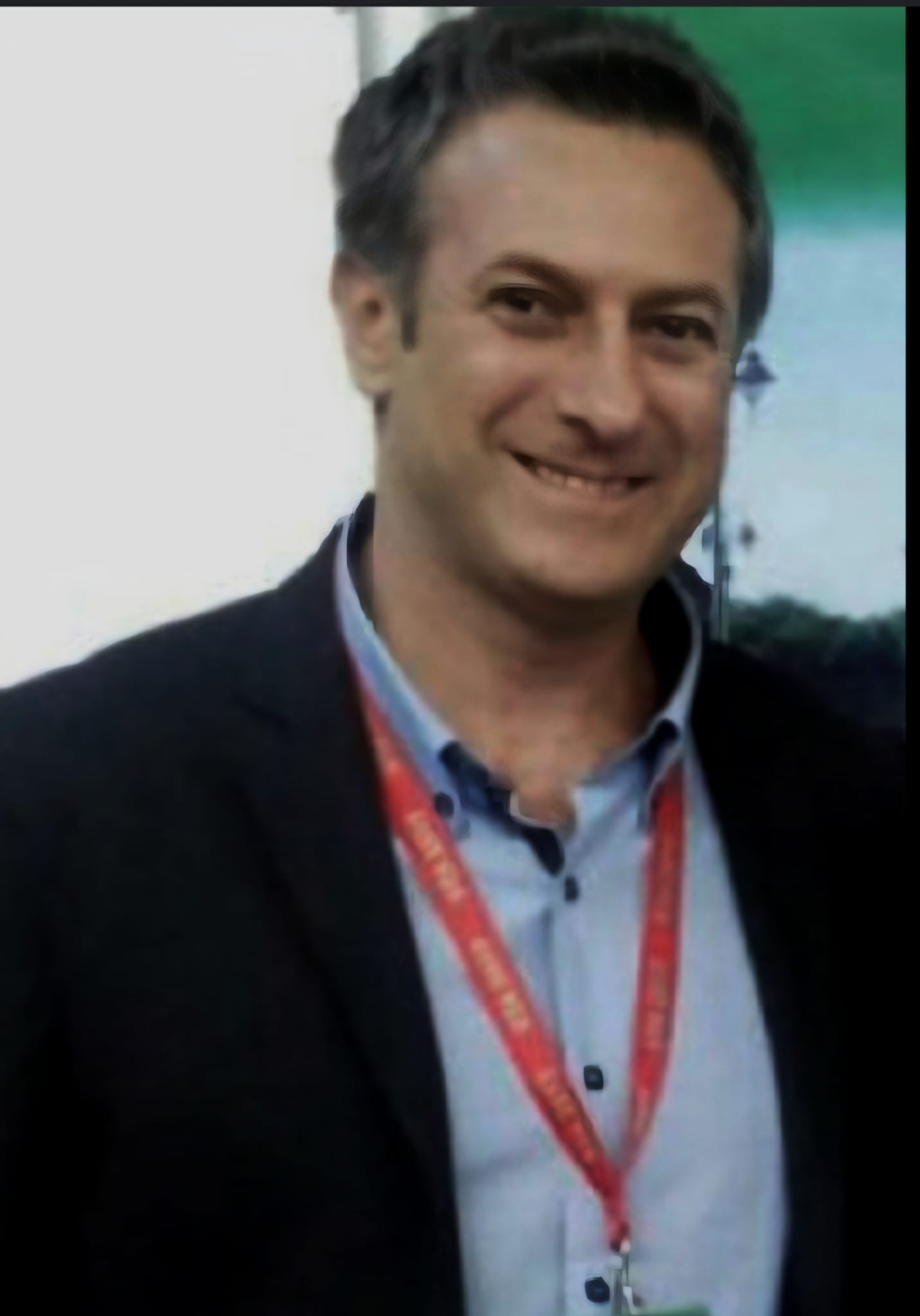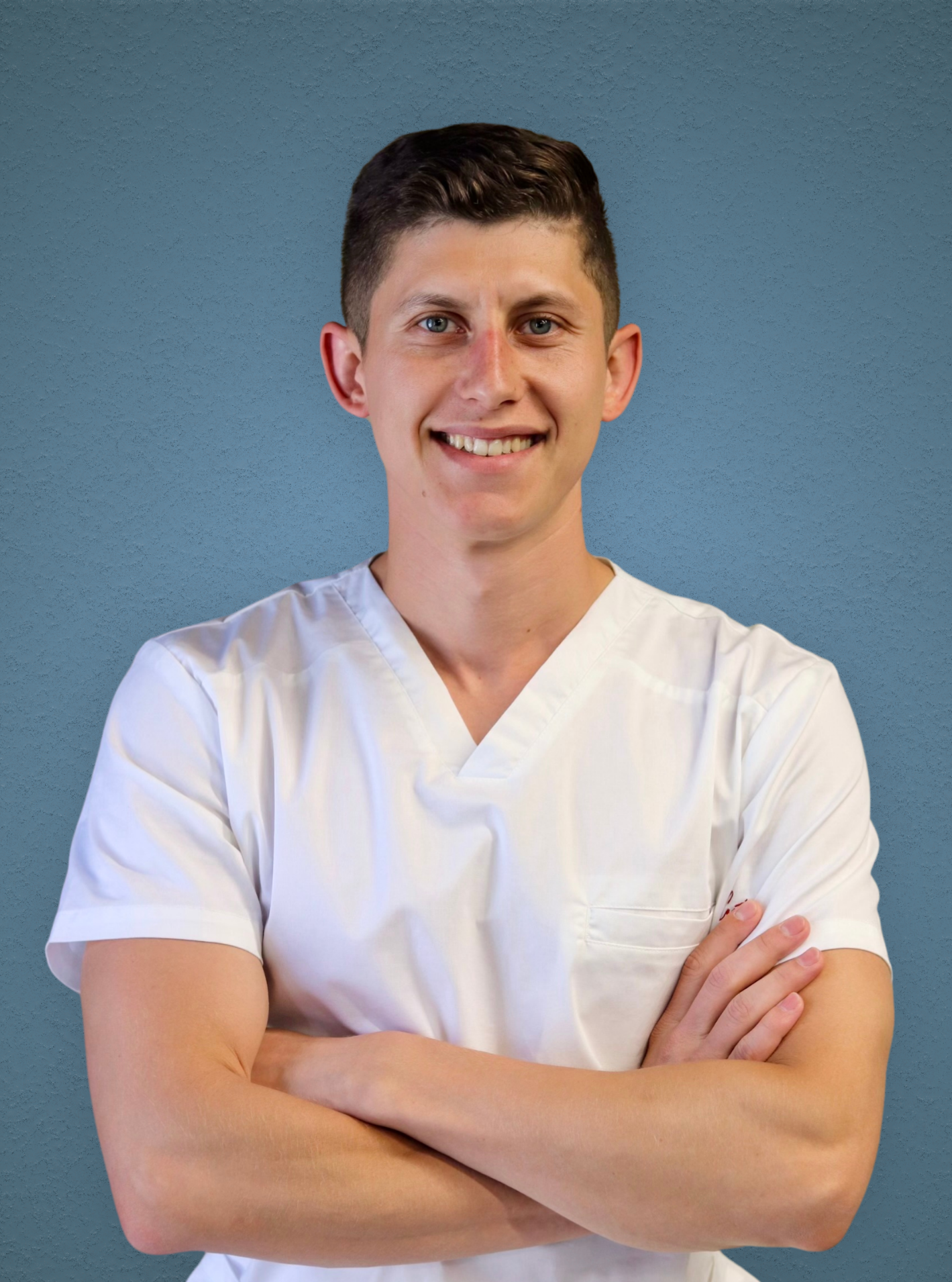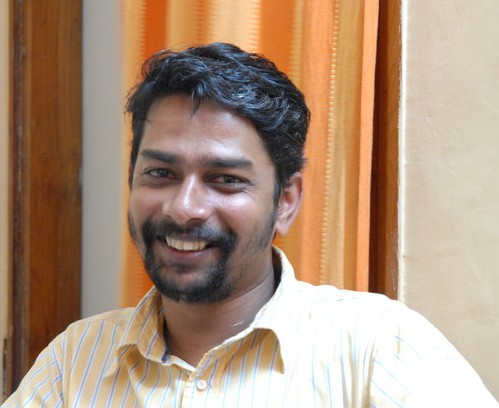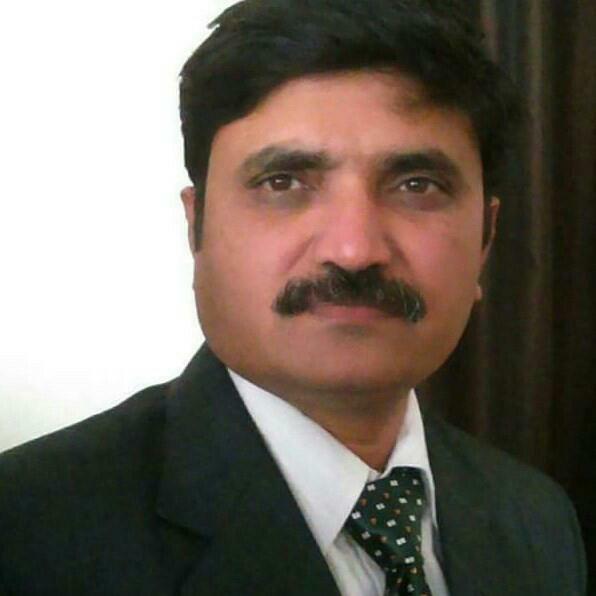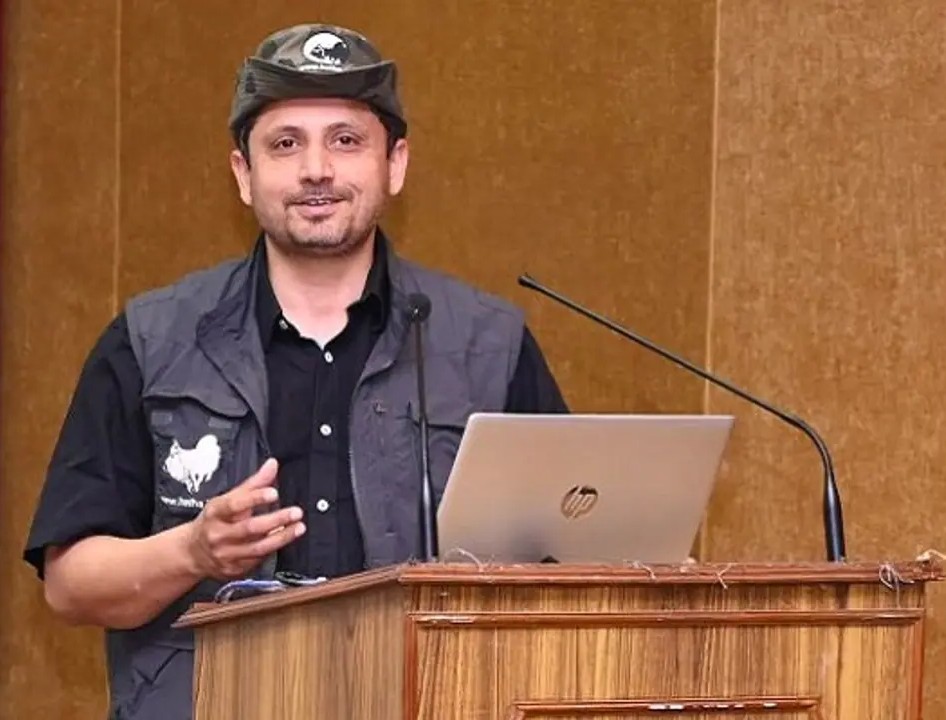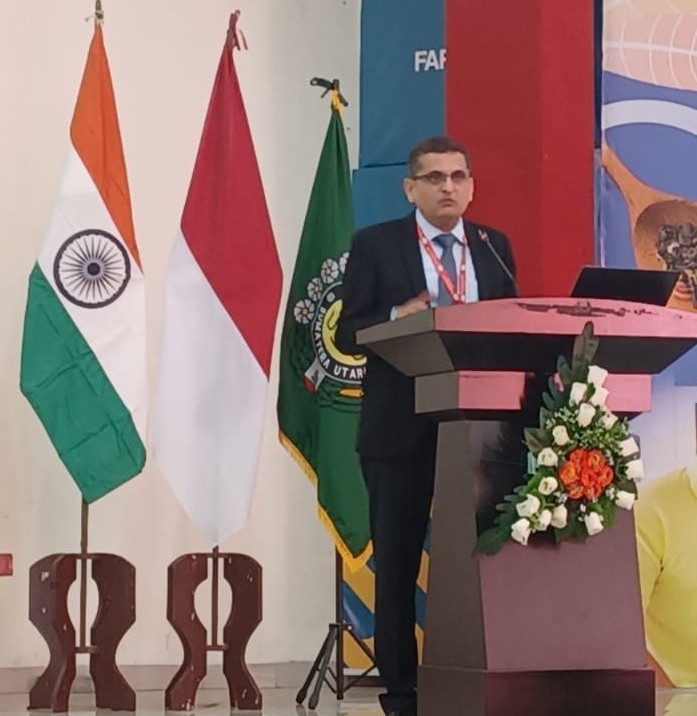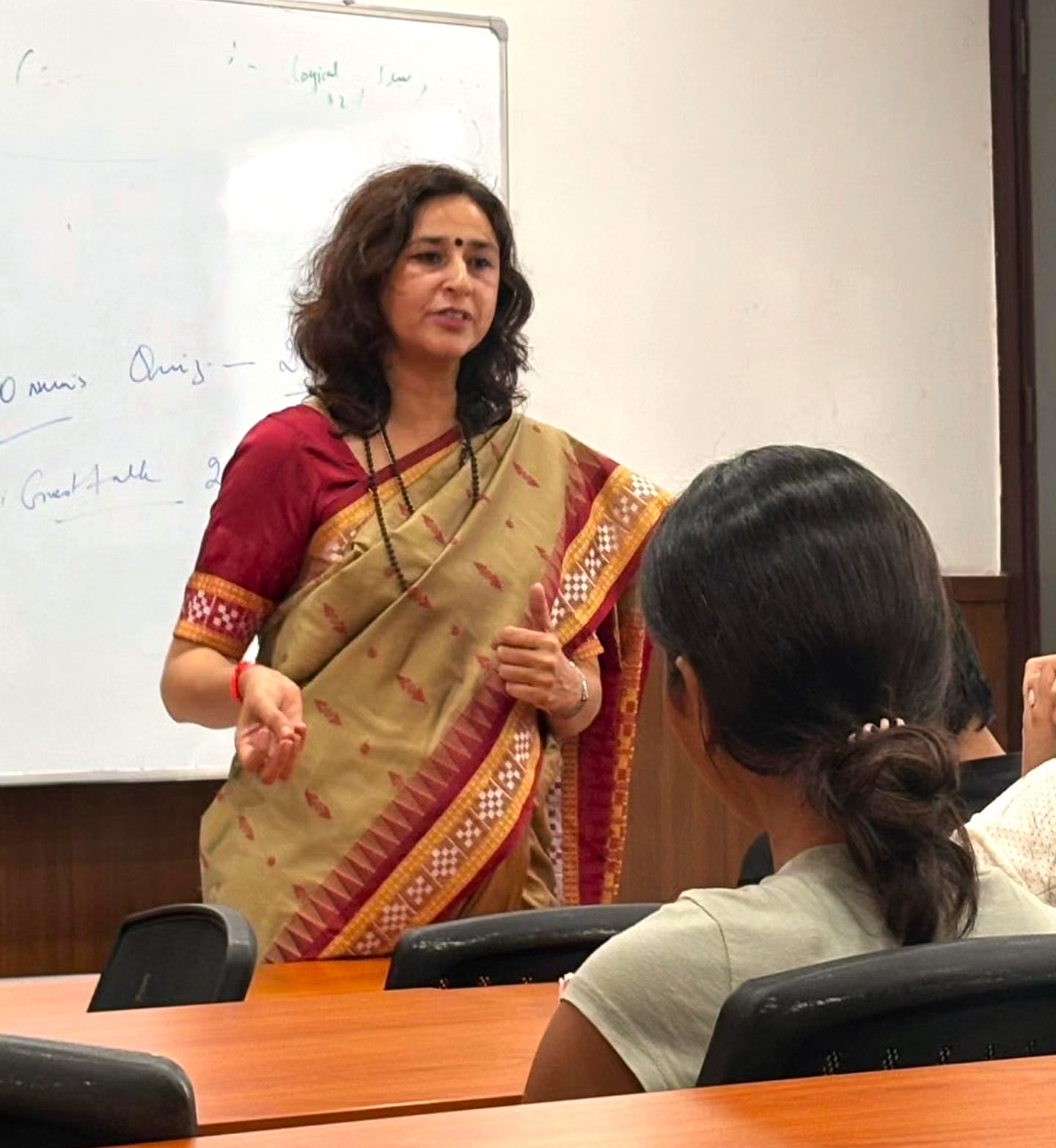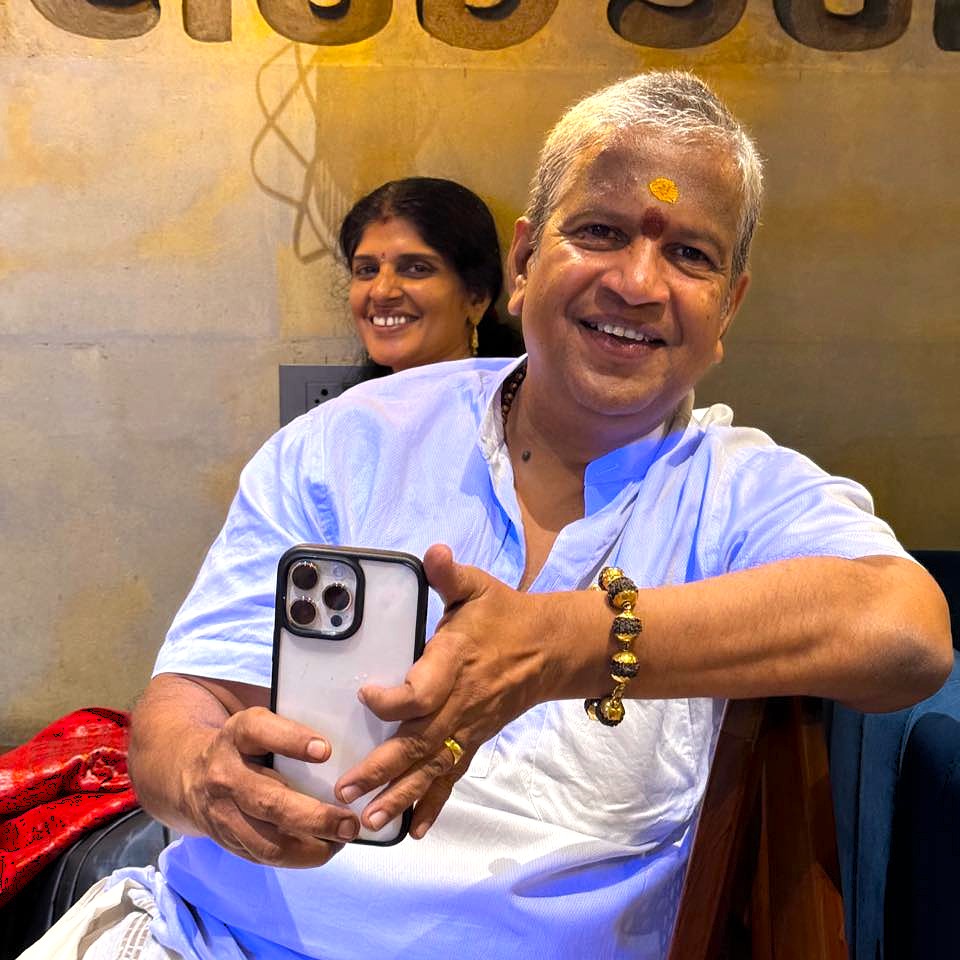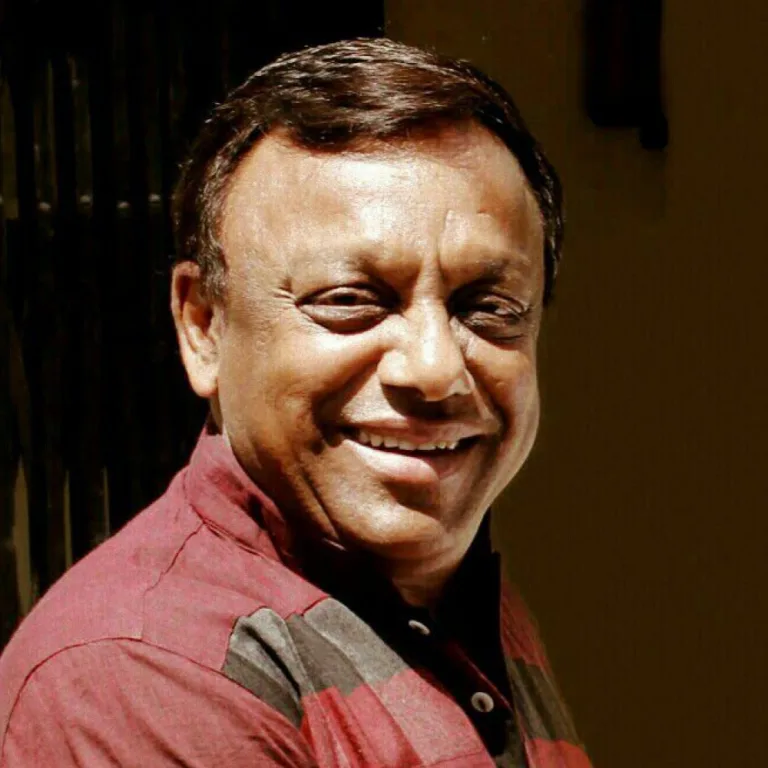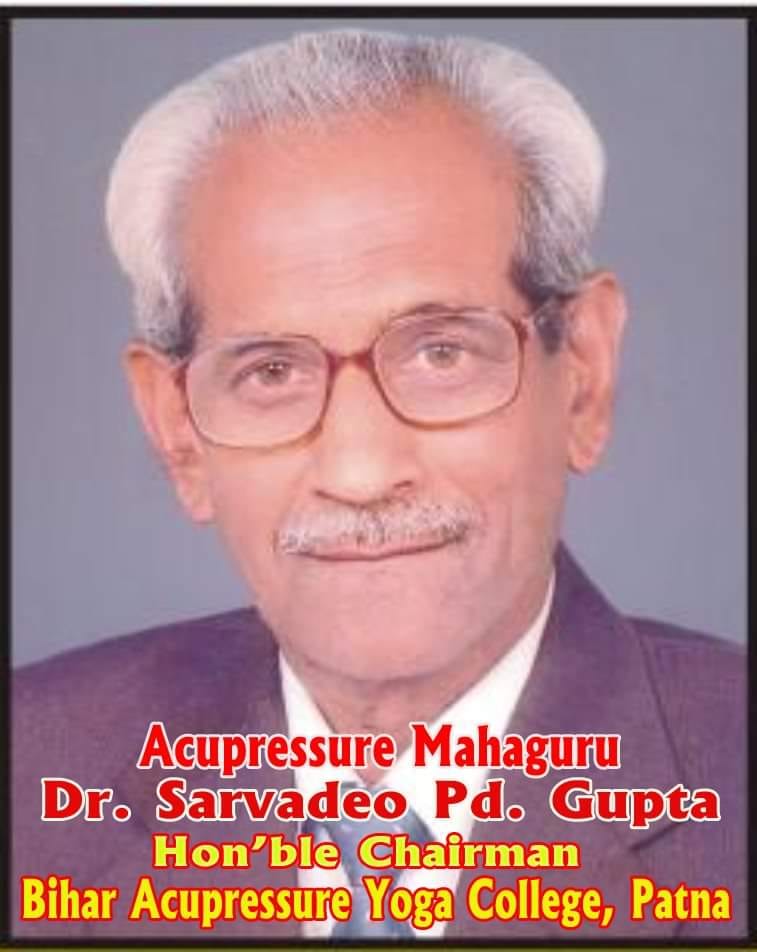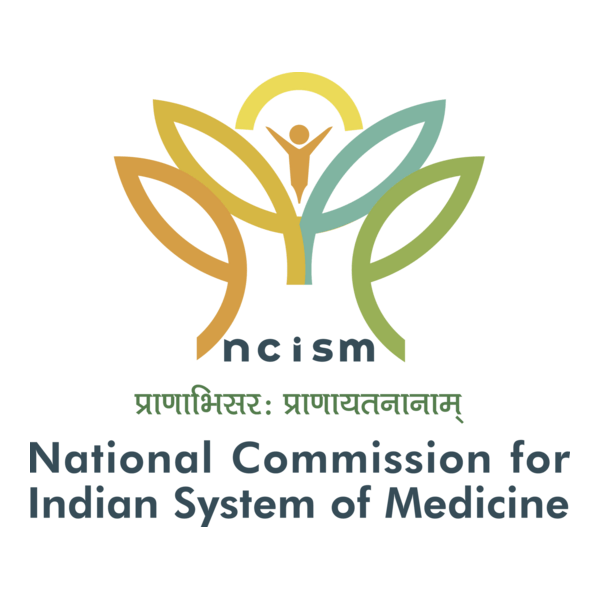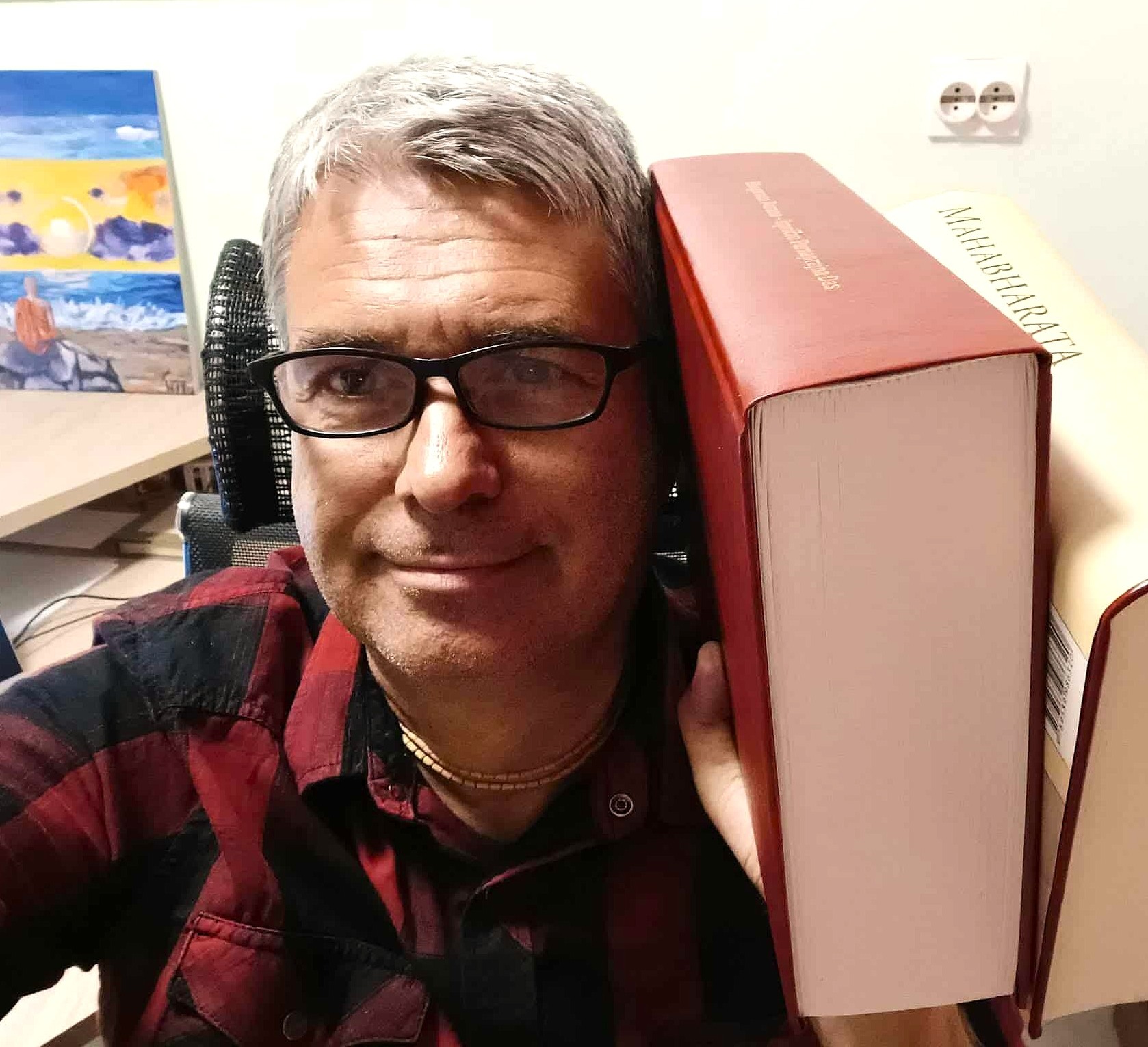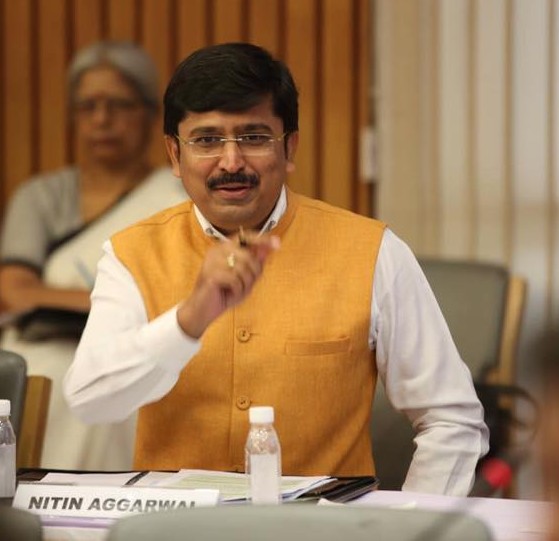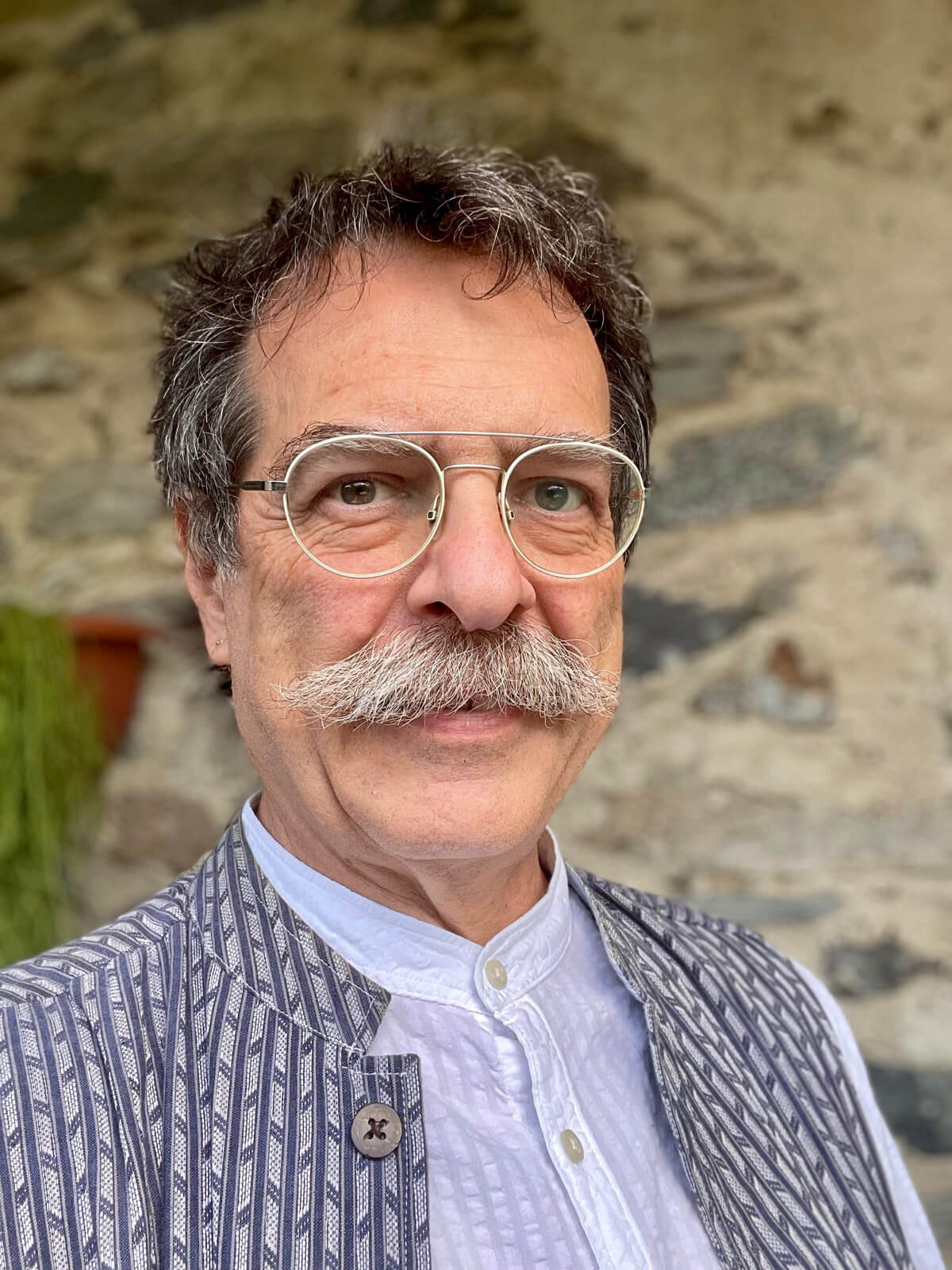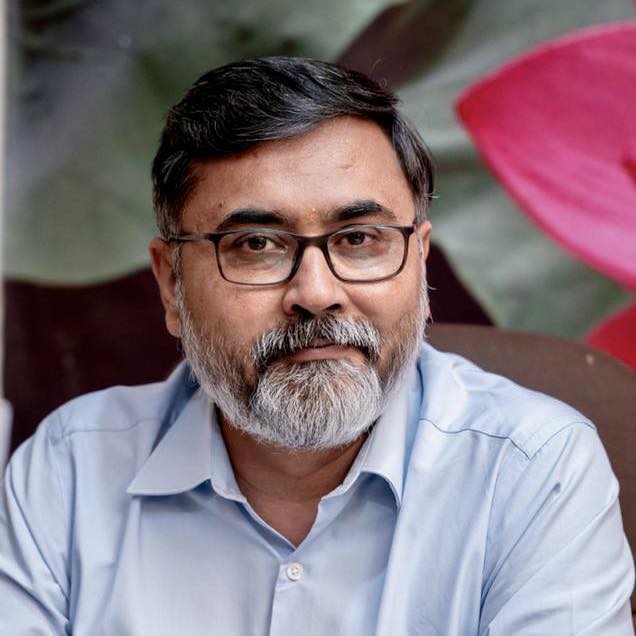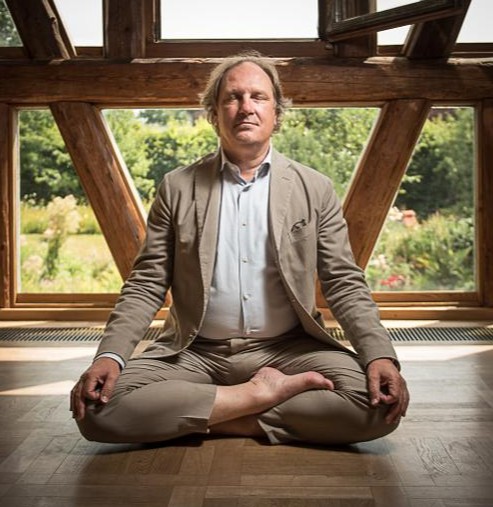Agenda
The mission of the Ayurveda Institute, Ayur Ashram, is to provide everyone with free access to expertise in Traditional, Complementary, and Integrative Medicine (TCIM). One of the long-term goals of this Conference is to create meaningful opportunities for today’s doctors of Western medicine in Europe to engage with Traditional Medicine. The aim is to allow them to encounter something that is at once intangible and profound, yet ubiquitous and essential—a dimension of health that can be tirelessly pursued, almost grasped, and no longer left only in the realm of intuition. In this way, we aspire for Conference lecturers to be invited by institutions ranging from secondary schools to universities of medical sciences across Europe, enabling them to present themselves as external collaborators and share the rich heritage and knowledge of Traditional Medicine with the new generation of medical professionals.
During the Conference, which will take place from January 14 to January 18, 2026, we will present several daily expert interviews on TCIM — all available free of charge. Subscribe to our newsletter to stay informed and ensure you don’t miss any updates about the Conference or our other activities.
January 14, 2026 – Wednesday
Special guest, Dr. Aleksandar Vojvodić, Orthopaedic Surgeon
Anatomical Correlations of the Iliopsoas – The Muscle of the Soul
The iliopsoas muscle has profound anatomical and functional significance. It originates from the lumbar spine and iliac fossa, passes under the inguinal ligament into the thigh, and inserts on the lesser trochanter of the femur, forming the iliopectineal bursa. With its extensive fascial connections to the abdominal viscera, diaphragm, and lower limb fascia, it also lies in close relation to the femoral vessels, femoral nerve, hip joint capsule, and thigh muscles such as the sartorius and rectus femoris. Drawing from surgical experience, this lecture will highlight: Anatomical connections of the iliopsoas with fascia and nerves; Its relation to the nervous system, epidural space, and cerebrospinal fluid; The role of the iliopsoas in the development of hip dysplasia in the prenatal period; The influence of psychological stress on the iliopsoas; Applications of prolotherapy in treating iliopsoas-related conditions; The impact of the iliopsoas on vasoconstriction, vasodilation, and circulation affecting the heart, kidneys, and brain; Its role in the locomotor system, small pelvic organs, and digestive system. Finally, the presentation will explore the significance of the iliopsoas in Western medicine when integrated with meditative therapy, a practice rooted in traditional medicine, thereby reflecting its reputation as the ‘muscle of the soul.
Dr. Ibro Sulejmanović
Cleansing the Lymphatic System to Support Whole-Body Detoxification
Lymphatic drainage is a gentle form of massage therapy designed to stimulate the lymphatic system and reduce swelling caused by lymphedema. Lymphedema is a common complication associated with various medical conditions. It is especially prevalent in individuals recovering from cancer treatments, particularly after breast cancer surgery, where lymph nodes are often removed as part of the procedure.
Dr. Vishwas V. Kulkarni
Ayurvedic Treatment for Piles (Haemorrhoids)
According to Ayurveda, imbalances in the doshas may influence the type and presentation of hemorrhoids: Pitta imbalance is often associated with inflamed, bleeding haemorrhoid’s that appear soft and red. Other possible symptoms include fever, diarrhoea, and excessive thirst. Vata imbalance may present with severe pain, constipation, and haemorrhoid’s that are dark, rough, and hard in texture. Kapha imbalance may lead to poor digestion and haemorrhoid’s that are pale or whitish in color, soft, large, and sometimes slippery in nature. One Ayurvedic surgical technique, Kshara Sutra therapy, uses a specially prepared medicated thread to tie off haemorrhoids at their base. This process gradually cuts off the blood supply, causing the haemorrhoid to shrink and detach naturally within 7 to 10 days. This more invasive approach is considered only when conservative treatments are not effective. In addition, Ayurvedic management may include specific herbal formulations to support postoperative healing, along with long-term lifestyle modifications in diet, exercise, and daily routines to help prevent recurrence.
Dr. Anil Kumar
Ayurvedic Wellness Programs and Trends in Europe
Ayurvedic wellness programs provide education in traditional Indian holistic medicine, focusing on lifestyle, nutrition, and mind–body practices to support physical, mental, and spiritual well-being. Educational pathways range from foundational certificate programs — such as the Ayurvedic Wellness Counsellor (AWC) offered at Healingveda centres in Europe — to advanced clinical training and even university-level master’s degrees in Ayurveda, such as those available at Ayurveda College, Thiruvananthapuram / Kerala University. These programs typically combine theoretical modules with practical training, internships, opportunities for case study discussions, and personal practice, ensuring a comprehensive learning experience.
Prof. Dr. Shriniwas Gujjarwar
Agni Karma – A Superior Parasurgical Ayurvedic Treatment
Agni Karma, also known as Dahan Karma, is an ancient Ayurvedic parasurgical procedure that involves the controlled application of heat to specific points on the body. It is primarily used in the management of painful musculoskeletal conditions such as sprains, heel pain, headaches, sciatica, and arthritis. The treatment usually lasts for 3 to 5 minutes per session. The term “Agni” means fire, and “Karma” means action, highlighting the therapeutic use of heat in this procedure. Heated metallic instruments — traditionally made from the Pancha Dhatu (five metals: gold, silver, iron, copper, and brass) — or modern micro-cautery units are applied to the affected area. The localized heat produces a controlled therapeutic burn, which can reduce inflammation, relieve pain, and coagulate bleeding vessels. The temperature varies depending on the metal used, being lowest with gold and highest with silver.
Dr. Sreeja Anil V.S
Specialized Postnatal Care with Traditional Ayurvedic Panchakarma Therapies and Personalized Recovery Plans for New Mothers
Ayurveda offers some of the most comprehensive postnatal care practices, supporting the physical health of both mother and baby while also strengthening emotional bonds and psychological well-being within the family. Through its holistic approach, Ayurveda helps restore balance to both mind and body, empowering mothers in their transition into parenthood and promoting complete recovery. A key focus is the restoration of the weakened digestive system through carefully designed postnatal diet plans that enhance tissue rejuvenation and strengthen immunity. Ayurvedic postnatal care also addresses hormonal fluctuations, supporting the return to hormonal balance. Gentle self-care practices, light massages with herbal oils, and daily exercises to rebuild muscle strength and vitality further contribute to the mother’s recovery. Ultimately, these practices enhance emotional well-being and create a nurturing, peaceful environment for both mother and child.
January 15, 2026 – Thursday
Special guest,
Address by the Guest on the Importance of Traditional, Complementary, and Integrative Medicine (TCIM)
An address on the importance of Traditional, Complementary, and Integrative Medicine (TCIM) highlights its global relevance as a key component of primary healthcare, combining ancient wisdom with modern scientific advancements. TCIM promotes holistic, people-cantered care, supports the fundamental human right to health and autonomy, safeguards biodiversity through sustainable practices, empowers communities, and contributes to universal health coverage by offering culturally sensitive, accessible, and equitable healthcare options. The WHO Traditional Medicine Strategy 2025–2034 emphasizes strengthening the evidence base, ensuring safety and quality, integrating TCIM into national health systems, and protecting the rights of Indigenous Peoples. Equitable access to TCIM products, underpinned by robust regulatory mechanisms to ensure safety, quality, and efficacy, is a critical outcome for achieving balanced and sustainable healthcare delivery.
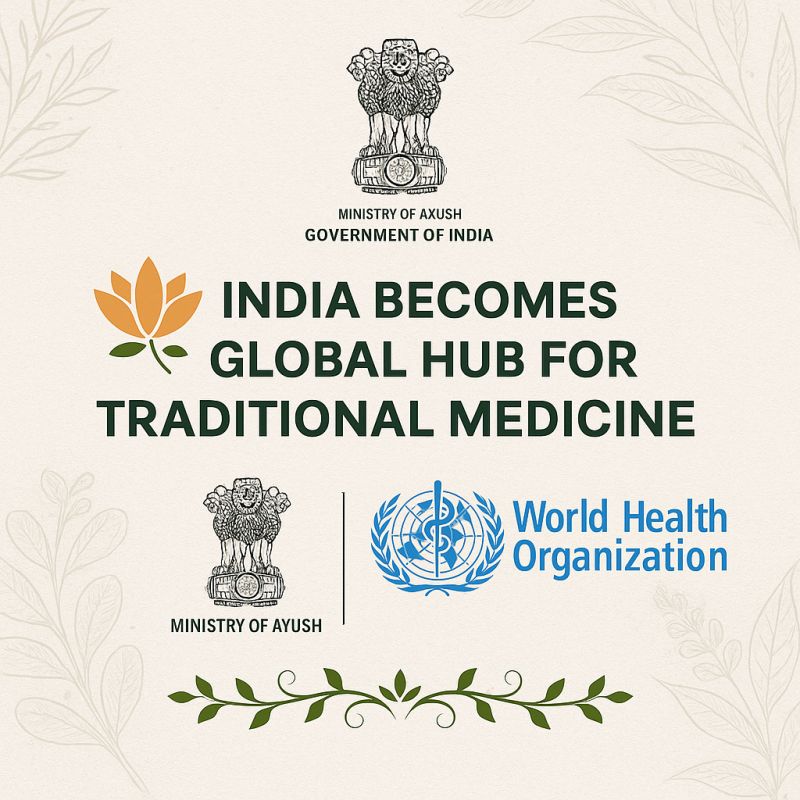
Mr. Anant Biradar
Yoga as a Global Project and Its Importance in Education for Everyday Vital Well-Being
Yoga originated more than 4,000 years ago, with roots in the region near the Caspian Sea, and later developed in the Indian subcontinent, where it continues to evolve today. It was first formally introduced to the West in 1893 by Swami Vivekananda in the USA and was rapidly embraced worldwide. The classical definition of Yoga is “Chitta Vritti Nirodhah” — the calming of the fluctuations of the mind. Through yogic techniques, we learn to clear our thoughts, focus on the present, and allow vital energy, or Prana, to flow harmoniously through the body. Yoga is a complete system that integrates physical and mental practices, helping to unify the conscious and subconscious aspects of the mind. It also extends beyond practice into daily life, guiding us to live by principles such as non-violence (Ahimsa) and truthfulness (Satya). The ultimate goal of Yoga is meditation, leading to deep inner calm and, in some cases, Samadhi — a state of self-realization, inner freedom, and liberation from attachment. Thus, Yoga is far more than physical exercise; it is a holistic path to well-being, personal growth, and balance in everyday Life.
Mr. Aseem Rawat
Understanding A1 and A2 Milk
Cow’s milk is composed of about 87% water and 13% solids, which include fat, carbohydrates (mainly lactose), minerals, and proteins. The major protein fraction in milk is casein. Around 30–35% of casein (equivalent to roughly two teaspoons in a litter of milk) is beta-casein, which occurs in different genetic variants depending on the breed of the cow. The two most common types are A1 and A2 beta-casein. Research has suggested that A1 beta-casein may be more difficult to digest for some individuals. During digestion, A1 milk can release a peptide called beta-casomorphin-7 (BCM-7), which is not always fully broken down into amino acids and may cause digestive discomfort in sensitive people. Some studies have explored potential associations between A1 milk consumption and various health conditions, though findings remain debated in the scientific community. By contrast, A2 milk, naturally produced by indigenous Indian cow breeds (desi cows), is generally considered easier to digest. Many people report improvements in digestive well-being, cholesterol balance, and overall vitality after switching to A2 milk. Rich in protein, calcium, and healthy fats, A2 milk is often described as “stomach-friendly” and supportive of immunity. Traditional Indian cow breeds such as Gir, Sahiwal, Red Sindhi, and Tharparkar not only yield A2 milk but are also recognized for their resilience and distinct physical features, such as the characteristic hump. Unlike crossbred varieties such as Holstein Friesian or Jersey cows, desi cows are closely tied to India’s cultural and medicinal traditions. Within TCIM practices, A2 milk is highly valued. Products such as Bilona Ghee and Panchagavya-based formulations derived from indigenous cows are regarded as important therapeutic elements, supporting holistic health for body, mind, and spirit.
Dr. Santosh Joshi
Understanding Unani Medicine
Unani medicine is an ancient Graeco-Arabic system of healing that emphasizes maintaining health through the balance of the body’s four humour’s: blood, phlegm, yellow bile, and black bile. Originating from the teachings of Hippocrates, it was later enriched by Arab and Persian scholars before spreading to India, where it is now an officially recognized part of the national healthcare system. Unani therapeutics employ a wide range of methods, including diet therapy, regimental therapy (such as exercise, massage, and cupping), pharmacotherapy (primarily herbal medicines, sometimes incorporating animal or mineral substances), and surgery. All of these are directed toward correcting imbalances in the humoral system and restoring overall well-being. The lecture is exposed to laboratory and Pharmacotherapy work for the composition of unani drugs. Utilizes drugs, primarily of herbal, animal, and mineral origin, to treat ailments and restore balance.
Miss. Shikha Jain
Organic Processing of Herbs in a Nature-Integrated Environment
Organic processing of herbs within a nature-integrated environment emphasizes sustainable harvesting, ethical sourcing, and minimal processing to preserve the plant’s natural integrity and active compounds. This model fosters harmony with nature while also supporting local communities through fair practices and regional economic strengthening. Key steps in organic processing include careful cleaning, drying, and packaging, all carried out with strict attention to biodiversity, soil health, and ecological balance. By avoiding synthetic chemicals, employing farm-derived resources such as composting and renewable energy, and using sustainable practices like integrated pest management, this approach protects ecosystems and promotes resilience. Projects often incorporate Fair Trade principles, ensuring just compensation for producers, encouraging community training programs, and promoting sustainable social and economic development. The ultimate goal is to create high-quality herbal products while safeguarding both the environment and human well-being.
Mr. Vana Mali
Organizing Panchakarma Programs in India for International Participants
Panchakarma is a traditional Ayurvedic detoxification therapy designed to eliminate accumulated toxins (Ama), balance the three doshas (Vata, Pitta, Kapha), and restore overall health. The therapy follows three key phases: Purvakarma (Preparatory Phase), Includes oil massages (Abhyanga), Steam therapy (Swedana), and other preparatory procedures to loosen toxins and prepare the body. Pradhanakarma (Main Detoxification Phase) involves the five classical cleansing actions: Vamana (therapeutic emesis), Virechana (purgation), Basti (medicated enemas), Nasya (nasal therapies), Raktamokshana (bloodletting) and Pashchatkarma (Post-Treatment Phase). Focuses on rejuvenation and long-term health maintenance through herbal formulations, restorative diets, and lifestyle practices. For visitors from Europe, the USA, and other parts of the world, Panchakarma programs in India are tailored to ensure authenticity, safety, and a supportive healing environment, combining traditional Ayurvedic wisdom with modern standards of care.
January 16, 2026 – Friday
Special guest, The World Health Organization (WHO)
Address by the Guest on the Importance of Traditional, Complementary, and Integrative Medicine (TCIM)
An address on the importance of Traditional, Complementary, and Integrative Medicine (TCIM) highlights its global relevance as a key component of primary healthcare, combining ancient wisdom with modern scientific advancements. TCIM promotes holistic, people-cantered care, supports the fundamental human right to health and autonomy, safeguards biodiversity through sustainable practices, empowers communities, and contributes to universal health coverage by offering culturally sensitive, accessible, and equitable healthcare options. The WHO Traditional Medicine Strategy 2025–2034 emphasizes strengthening the evidence base, ensuring safety and quality, integrating TCIM into national health systems, and protecting the rights of Indigenous Peoples. Equitable access to TCIM products, underpinned by robust regulatory mechanisms to ensure safety, quality, and efficacy, is a critical outcome for achieving balanced and sustainable healthcare delivery.

Dr. Balendu Prakash
Integrating Ancient Wisdom with Modern Care
Ayurveda vs. Allopathy: Is this a debate we should still be having? With over 40 years of experience in the field of Ayurveda, I have often been asked to comment on the relationship between Ayurveda and modern medicine. To me, this is no longer a debate. Modern medicine has firmly established itself as the foundation of emergency care and critical interventions, such as intensive care. At the same time, Ayurveda offers profound knowledge in managing chronic conditions and supporting long-term well-being. I believe the true strength lies not in competition but in collaboration. Every medical system has its limits, and I have experienced this reality in my own life. When I suffered a heart attack, it was modern medicine that saved my life. I underwent life-saving treatment in a hospital, and I remain deeply grateful for the indispensable role of emergency medicine. However, for the last 25 years, I have thrived by following an integrated approach, drawing upon the complementary strengths of both Ayurveda and allopathy. My own recovery is proof of this philosophy: true healing is best achieved through a holistic treatment system that respects both traditional wisdom and modern science. This vision aligns with the growing field of integrative medicine, which is increasingly endorsed worldwide, including by the World Health Organization (WHO, 2013), for its potential to provide comprehensive, patient-centered care.
Prof. Dr. Rajani A Nayar
The Importance of the Functioning of the Board of Ethics & Registration in the AYUSH Mission
The Board of Ethics & Registration (BER) plays a critical role in the AYUSH mission by maintaining a national registry of qualified AYUSH practitioners and ensuring that they adhere to established ethical and professional standards. By registering practitioners and monitoring compliance, the BER helps protect the public from malpractice while promoting access to safe, high-quality, and reliable AYUSH healthcare services. This function is essential for the legitimacy and effective operation of traditional medicine systems. It fosters public trust, upholds professional accountability, and supports the broader goals of the National AYUSH Mission, which aims to provide universal, equitable, and quality-assured healthcare across India.
Prof. Dr. Vidula Gujjarwar
The Role of Director-Principal in Ayurvedic Medicine
In Ayurvedic medicine, a Director – Principal leads an institution by overseeing its educational, administrative, and research activities while upholding the principles of traditional Ayurveda. This role involves maintaining high academic standards, promoting research and publications, fostering professional development among staff, and providing visionary leadership to the faculty. The Director – Principal ensures that the institution effectively teaches and practices Ayurveda, emphasizing not only the treatment of disease but also the maintenance and promotion of health through principles such as the balance of physical, mental, and emotional well-being. A well-led institution, guided by a visionary Director – Principal, can play a pivotal role in advancing and systematizing Ayurvedic practice, ensuring its safe, relevant, and sustainable application for holistic health.
Prof. Dr. Atul Babu Varshney
Ayurvedic Management of Arbuda through Classical Formulations and Single-Drug Therapies in Integrative Oncology and Palliative Care
Ayurveda, the traditional Indian system of medicine, provides a holistic and nature-aligned perspective on health and disease. Within this framework, Arbuda is considered analogous to malignancies such as carcinoma and sarcoma. Cancer, now the leading global cause of death, arises from both intrinsic and extrinsic factors, including genetics, lifestyle, and environmental exposures. In Ayurveda, the pathogenesis of Arbuda is attributed to factors such as Ama (toxic metabolic by-products), Visha (poisons), and Viruddha Ahara (incompatible diet), all of which disrupt cellular homeostasis and immunity. While conventional cancer therapies remain effective, their non-selective cytotoxic effects often result in significant adverse outcomes. Ayurvedic approaches, particularly through herbal formulations and single-drug therapies, may offer complementary benefits by reducing treatment-related side effects and supporting systemic recovery. This study systematically reviewed classical Ayurvedic texts, including Bruhat Trayi, Laghu Trayi, 25 Nighantus, and other Samhitas. Electronic databases were also searched using the keyword “Arbuda.” The review identified 35 classical formulations and three single drugs described for Arbuda. Notably, single herbs such as Sadapushpaa, Vanatrapushi, and Upodika have demonstrated potential anticancer activity in recent studies. These findings underscore the potential of Ayurvedic therapies to contribute to preventive, palliative, and supportive cancer care within an integrative oncology framework.
Dr. Sarvadeo Prasad Gupta
Acupressure and Homeopathy as Complementary Approaches for Vital Well-Being
Acupressure, a needle-free therapy that applies pressure to specific meridian points, and homeopathy, which uses highly diluted natural substances to stimulate the body’s healing response, are both widely practiced complementary therapies aimed at supporting overall well-being. Acupressure has shown potential benefits for managing conditions such as nausea, stress, and pain, while homeopathy is often used in individualized treatment plans to address chronic and acute conditions. However, scientific evidence for the effectiveness of both therapies in treating chronic illnesses remains limited, with controlled studies producing mixed or insufficient results. Therefore, these approaches are best considered as complementary rather than substitutes for conventional care. Individuals are encouraged to consult qualified healthcare professionals to integrate these therapies safely and to avoid delaying necessary medical treatment.
January 17, 2026 – Saturday
Special guest, Health insurance for the provider and user of therapeutic services in Europe
Address by the Guest on the Importance of Traditional, Complementary, and Integrative Medicine (TCIM)
An address on the importance of Traditional, Complementary, and Integrative Medicine (TCIM) highlights its global relevance as a key component of primary healthcare, combining ancient wisdom with modern scientific advancements. TCIM promotes holistic, people-cantered care, supports the fundamental human right to health and autonomy, safeguards biodiversity through sustainable practices, empowers communities, and contributes to universal health coverage by offering culturally sensitive, accessible, and equitable healthcare options. The WHO Traditional Medicine Strategy 2025–2034 emphasizes strengthening the evidence base, ensuring safety and quality, integrating TCIM into national health systems, and protecting the rights of Indigenous Peoples. Equitable access to TCIM products, underpinned by robust regulatory mechanisms to ensure safety, quality, and efficacy, is a critical outcome for achieving balanced and sustainable healthcare delivery.

Coming soon
Osteopathy as a Therapeutic Approach for Vital Well-Being
Osteopathy addresses all aspects of the body—musculoskeletal, visceral (soft abdominal organs), and craniosacral (the bones of the skull and their connected structures). An osteopath works with the interconnectedness of the body through connective tissue (fascia), muscles, bones, blood, and other circulating fluids such as cerebrospinal fluid around the brain and spinal cord. One of the key benefits of osteopathy lies in its holistic approach—addressing underlying structural and functional imbalances to improve mobility, relieve pain, and enhance overall vitality. Whether dealing with chronic pain, musculoskeletal dysfunction, or general health concerns, osteopathy provides a natural, patient-centered pathway to better well-being. Treatment techniques may include gentle manipulations, stretching, massage, and other therapeutic methods. The root cause of imbalance—whether physical or psychological—can manifest in the body. Once identified, treatment may involve diverse approaches, ranging from a light thrust or gentle physical manipulation of hard and soft tissues to the use of very subtle touch. These techniques not only help re-establish circulation but also realign structures, resulting in improved function, efficiency, and quality of life. Osteopaths also collaborate with other healthcare professionals and may refer patients to general practitioners or surgeons when necessary, ensuring comprehensive and safe care.
The National Commission for Indian System of Medicine (NCISM)
Siddha Medicine
The Siddha system of medicine is one of the oldest traditional medical systems, with its origins in Southern India, particularly Tamil Nadu. It was developed by the Siddhars—spiritual ascetics and scholar-physicians—who sought to achieve siddhi (perfection) of body and mind through yoga, meditation, diet, and ethical practices. Considered the premier scientists of ancient times, the Siddhars laid the foundation for a holistic medical system rooted in both spiritual and physical well-being. Siddha medicine is based on the principles of the five elements (Aimbhootham) and the three bodily forces (Mukkuttram), using herbal and herbo-mineral formulations to treat disease and restore balance. Siddhars were also believed to possess the ashta siddhis (eight supernatural powers). Agastyar (Agasthya) is traditionally regarded as the founding father of Siddha medicine, and eighteen Siddhars are recognized as central to its development. A distinctive feature of this system is its emphasis on revitalizing and rejuvenating dysfunctional organs, maintaining the balance of doshas, and promoting longevity. Specialized therapies such as Kayakarpam (a unique combination of medicine and lifestyle practices) and Muppu (the “universal salt”) are considered hallmarks of Siddha medicine.
The National Commission for Indian System of Medicine (NCISM)
Unani Medicine
Unani medicine (also spelled Yunani) is a traditional medical system practiced in the Middle East and South Asia. It is rooted in the Graeco-Arabic tradition, drawing from the teachings of the Greek physician Hippocrates and the Roman physician Galen, and later expanded into a sophisticated medical system during the medieval era by great Arabian and Persian scholars such as Rhazes (al-Razi), Avicenna (Ibn Sina), Al-Zahrawi, and Ibn Nafis. Unani medicine was introduced to India in the 12th–13th centuries with the establishment of the Delhi Sultanate (1206–1527) and reached its peak during the Mughal era. It was further revitalized in modern times by eminent physician and scholar Hakim Ajmal Khan (1868–1927), who played a pivotal role in preserving and promoting the system. Today, the Unani system of medicine is formally recognized under the Central Council of Indian Medicine (CCIM) as per the Indian Medicine Central Council Act, 1970 (IMCC Act, 1970), and continues to play an important role in India’s AYUSH mission, contributing to integrative and holistic healthcare.
The National Commission for Indian System of Medicine (NCISM)
Sowa-Rigpa (Traditional Tibetan Medicine)
Sowa-Rigpa, also known as Traditional Tibetan Medicine, is an ancient holistic medical system that originated in India and developed across the Trans-Himalayan region. The term “Sowa-Rigpa” means “Knowledge of Healing” in the Bhoti language. This system incorporates elements of Ayurvedic, Chinese, and Greco-Arab medicine and is based on the theory of maintaining balance among the five cosmological elements within the body. Sowa-Rigpa employs sophisticated diagnostic techniques, including pulse analysis and urinalysis, and offers treatments through dietary and behavioral modifications, herbal and mineral-based medicines, and physical therapies such as moxibustion and massage. Its foundational text is the Four Tantras (Gyushi / rGyud-bzhi), also known as The Secret Tantra Instruction on the Eight Branches, the Immortality Elixir Essence. These are: Root Tantra, Exegetical Tantra, Instructional Tantra and Subsequent Tantra. Although written instructions are preserved in the Four Tantras, oral transmission has remained an essential part of the tradition, ensuring the continuity of knowledge across generations. In recognition of its importance, the Sowa-Rigpa system of medicine was officially included under the Central Council of Indian Medicine (CCIM) in 2012, as per Gazette Notification No. 2345 dated 16.12.2011. Today, it is practiced not only in India but also in various parts of the world, continuing its role in holistic and integrative healthcare.
Mr. Dean Valentić
Understandings of Vedic Astrology Jyotisha in the European People’s Environment
During the Middle Ages, Arabic scholars translated Indian astrological texts, such as those of Brahmagupta, thereby introducing Hindu astrology into Europe. These translations, combined with the reintroduction of Greek astrological works, contributed to the intellectual climate of the Renaissance, fostering astrology’s revival and its integration into fields such as science and medicine. Although Western and Vedic astrological traditions diverged after this period, today Vedic astrology (Jyotisha) is increasingly practiced in Europe. It is used both in therapy and coaching, particularly among those seeking a spiritually oriented system of celestial guidance. Jyotish is considered a “sister science” to Ayurveda, as both originate from the Vedas and share a foundation in the five elements (ether, air, fire, water, and earth) and their influence on the body’s constitution (doshas: Vata, Pitta, Kapha). In practice, Jyotish employs a birth chart (Janam Kundali), based on an individual’s date and time of birth, to reveal constitutional tendencies, potential health vulnerabilities, and karmic patterns. This astrological insight can guide Ayurvedic practitioners in designing personalized treatments, including dietary recommendations, herbal remedies, and lifestyle modifications, aimed at restoring balance and holistic well-being. Jyotish also prescribes Upaya’s (remedial measures) such as mantras, rituals, gemstones, and spiritual practices to mitigate the effects of challenging planetary alignments. When integrated with Ayurveda, Jyotish addresses not only physical symptoms but also the deeper karmic roots of imbalance, supporting health on physical, mental, and spiritual levels.
January 18, 2026 – Sunday
Special guest, Dr. Nitin Agrawal – AyurRog Expo
It is my honor to join you as a special guest and to share my perspective on the importance of Traditional, Complementary, and Integrative Medicine (TCIM).
As the founder of AyurRog Expo, India’s only vocational and business event dedicated to Ayurveda, Yoga, Naturopathy, Unani, Siddha, Homeopathy (AYUSH), Herbal and Agro-products, natural fitness and wellness services, and wellness/spiritual tourism, I have witnessed how powerful these traditions can be when brought together on a single platform. Our expo has become a pioneer in connecting AYUSH, organic, natural, and wellness trades in the region. Through AyurRogExpo, my vision has always been to connect the best of natural health and wellness experts, academic institutions, and thought leaders from across the globe. Beyond this, it is also a golden opportunity for budding scholars, researchers, end-users, and trade bodies to deepen their understanding of traditional systems of medicine. The event brings together Keynotes, Knowledge Sessions, Paper Presentations, Competitions, and an integrated Exhibition, designed to both preserve and promote the knowledge of these healing systems. My goal is to convincingly position the healing potential of TCIM by showcasing its strong conceptual foundations and infinite application possibilities. AyurRog Expo is not just an event—it is a movement to prepare young talents for emerging healthcare challenges, to foster collaborations, to formalize research initiatives, and to help global communities recognize the immense value of traditional healing.
Coming soon
Experience in Therapy Programs Combining Ayurveda and Modern Western Medicine
Therapeutic programs that combine Ayurveda and modern Western medicine represent an integrative approach to healthcare, uniting holistic Ayurvedic principles—including lifestyle guidance, nutrition, and herbal treatments—with evidence-based conventional medicine. Such programs are often applied in cancer care, chronic disease management, and mental health, aiming to improve patient outcomes and overall quality of life by drawing on the strengths of both systems. Despite these promising applications, several challenges remain. Integration is hindered by the lack of scientific standardization, insufficient regulatory frameworks, and inconsistent quality control of Ayurvedic products and practices. Furthermore, there is a shortage of trained practitioners in the West who can effectively integrate these complex systems, as well as a need for greater collaboration between biomedical doctors and Ayurvedic professionals. The way forward includes the development of collaborative research models, including advanced tools such as omics technologies, to better understand the molecular mechanisms of traditional compounds. At the same time, establishing stringent standards for Ayurvedic practices and products, creating robust regulatory frameworks, and fostering education and cross-training between conventional and Ayurvedic practitioners are essential steps toward building a truly integrative healthcare model.
Dr. Antonio Morandi
The Popularity of Ayurveda in Italy and Europe (Italians train in Ayurvedic treatment of Panchakarma)
Ayurveda is rapidly gaining popularity and market presence in Italy and across Europe, driven by the growing demand for natural, holistic, and preventive healthcare alternatives. This trend is evident both in the wellness tourism sector and within modern healthcare practices, where Ayurvedic treatments—particularly Panchakarma—are increasingly sought after. In Italy, this is also reflected in the steady outflow of Italians traveling to Kerala, India, to undergo authentic Ayurvedic therapies at their traditional source. The projected expansion of this market is supported by rising environmental and climate awareness, a growing preference for plant-based solutions, and strategic awareness initiatives undertaken by Ayurvedic institutions and companies across both Europe and Asia. As an Ayurvedic elder (born 1957), a physician and neurologist with formal qualifications in Ayurveda, I will provide an authoritative insight into the development of Ayurveda in Italy and Europe. Through my leadership, clinical practice, and educational initiatives, I have played a pioneering role in establishing Ayurveda as a respected system of medicine in Italy and in facilitating its spread throughout Europe.
Dr. Somit Kumar, Director & CSO
What Makes a Good Ayurvedic Pharmacy (Manufacturing industry for the processing of raw materials and components in the pharmaceutical industry)
In recent years, the demand for Ayurvedic medicines has increased significantly, highlighting the urgent need for trustworthy and high-quality products. The true efficacy of Ayurveda lies in the purity of ingredients and strict adherence to traditional preparation methods, and pharmacies play a central role in ensuring these standards. A good Ayurvedic pharmacy is defined by several key factors. Foremost is the quality and authenticity of products, prepared from pure, natural ingredients using time-tested traditional methods. The value of such preparations is increasingly supported by research, including studies showing the benefits of Ayurvedic medicines in conditions such as osteoarthritis, where pain reduction and improved function have been documented. An excellent Ayurvedic pharmacy also offers a wide range of products, from herbal tonics and dietary supplements to potent herbal medicines that form the cornerstone of Ayurvedic treatment. Knowledgeable staff, capable of providing accurate guidance on product usage and benefits, further enhance patient trust and outcomes. Finally, strict adherence to regulatory requirements and safety standards is indispensable. Proper licensing, transparency in sourcing, and compliance with safety considerations ensure both efficacy and consumer protection. Together, these principles define what makes an Ayurvedic pharmacy a trusted guardian of health and wellness.
Coming soon
The Naturopathy as a Vital Health
Naturopathy is a holistic medical system that recognizes the body’s inherent healing power, often referred to as the “Vital Force.” Its central aim is to restore balance and health by treating the whole person—mind, body, and spirit— while focusing on the root causes of illness rather than simply alleviating symptoms. Modern naturopathic medicine combines traditional healing methods with selected elements of modern science. It employs a wide range of therapies, including herbal medicine, massage, acupuncture, nutritional counselling, exercise, and stress management. Touch-based approaches, such as naturopathic manipulative therapy, are also used to restore structural and energetic balance. Education and prevention are at the core of naturopathic practice, with practitioners guiding patients toward healthier lifestyle choices. Naturopathic physicians (ND or NMD) undergo accredited four-year, graduate-level training in basic sciences comparable to conventional medical schools, alongside specialized study in nutrition, psychology, and complementary therapies. Naturopathy is practiced in hospitals, clinics, community centres, and private offices worldwide, often in collaboration with conventional healthcare providers. As an integrative system of care, it plays a vital role in promoting resilience, prevention, and overall well-being.
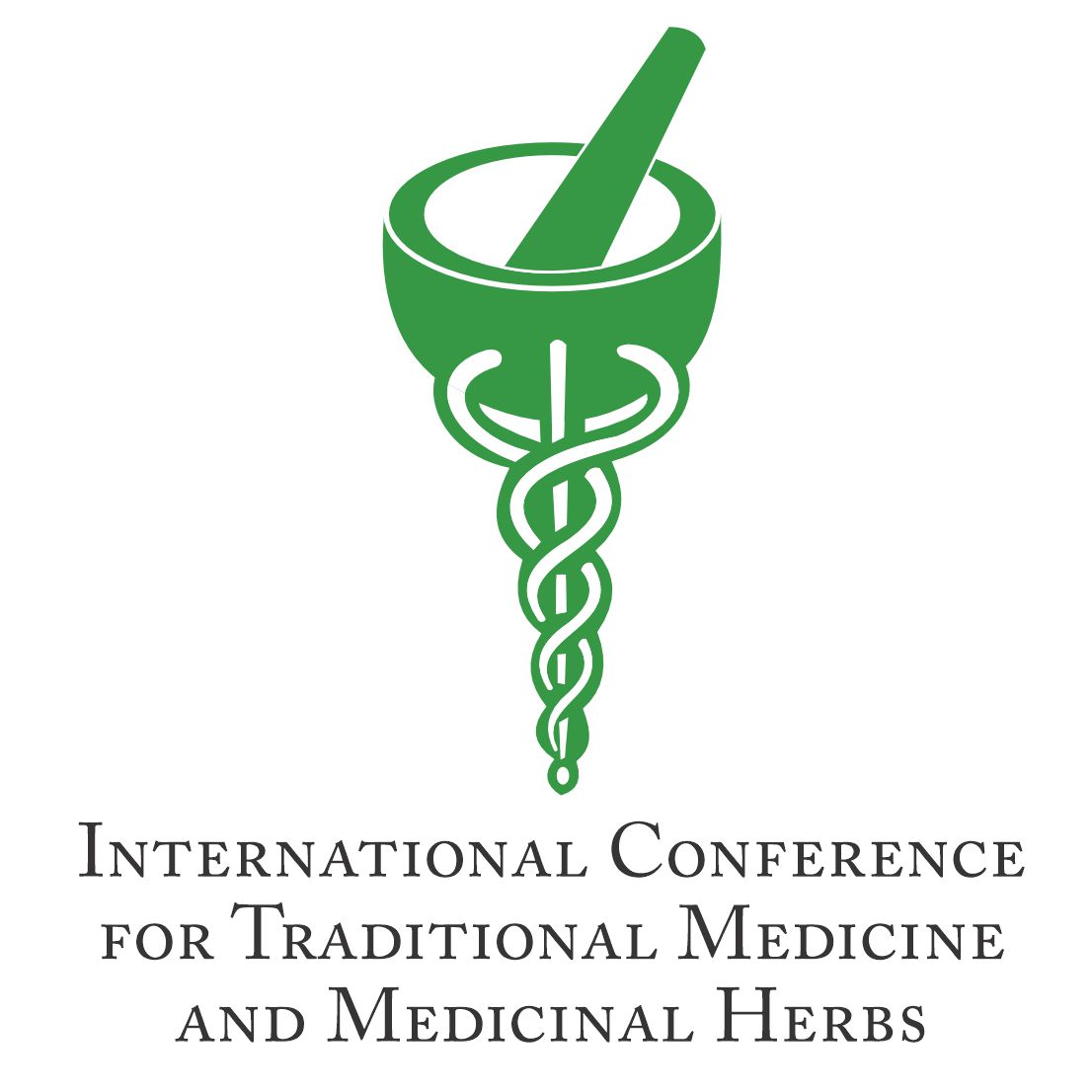
Mr. Mark Rosenberg
Ayurveda in Europe, The Rosenberg European Academy of Ayurveda (REAA)
As with other complementary medical systems, there has been a significant rise in public interest in Ayurveda across Europe. This trend is especially strong in German-speaking countries, where alternative medicine enjoys broad popularity. In several European nations—including Germany, Italy, and the UK—doctors can now study Ayurvedic medicine within the framework of postgraduate medical education, recognized by medical councils and universities. Alongside Ayurveda treatment centres and hospitals, prestigious clinical projects have begun officially recognizing Ayurveda’s value as a complementary medical system. The Rosenberg European Academy of Ayurveda (REAA), founded in 1993, has been a driving force in this development. As a nonprofit organization, REAA is funded primarily through tuition fees from students, treatment fees from patients, and a modest amount of tax-deductible donations. This creates unique challenges in the highly subsidized European healthcare and education sectors. Nevertheless, as an academy dedicated to holistic health and education, REAA pursues social and educational purposes rather than economic gain. For over two decades, REAA has played a pioneering role in the recognition and establishment of Ayurveda in German-speaking countries. In addition to its Ayurveda Health and Treatment Centre in Birstein, Germany, the academy operates training centers in Austria, Switzerland, and across Germany. Over the past 15 years, REAA has offered professional courses in Ayurveda massage, nutrition, and medicine, training more than 3,000 students in long-term programs. In total, about 13,000 adult students—including 500 medical doctors and 2,000 medical professionals—have participated in its continuing education programs on Ayurveda and Yoga. Through these efforts, REAA has become a leading institution in the development and dissemination of Ayurveda in Europe.

